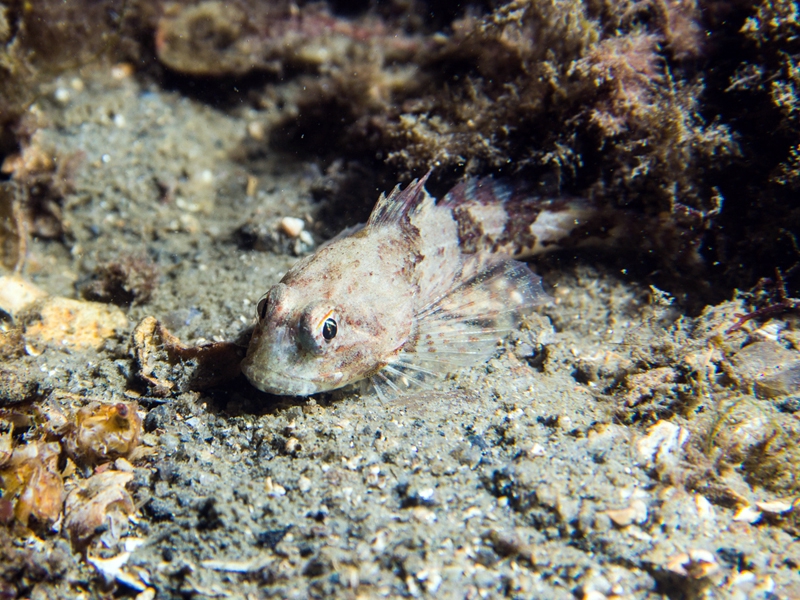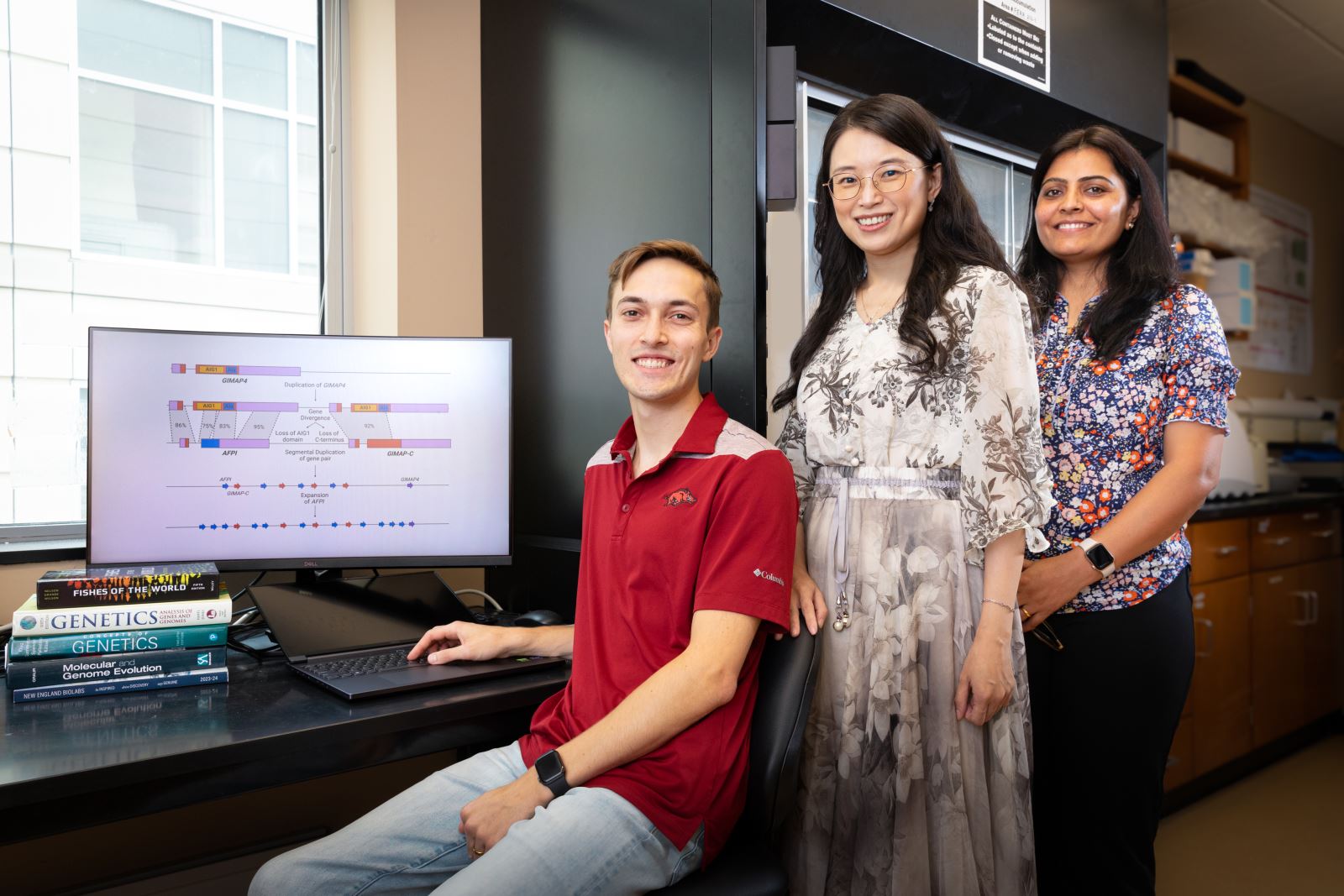
Where do new genes come from? That’s the question a team of biological sciences researchers from the U of A set out to answer in a new study.
They did so by examining the evolution of antifreeze proteins in fish — an essential adaptation that allows fish to survive in freezing waters by preventing ice formation through the binding of their antifreeze proteins to ice crystals.
The team investigated these proteins in three unrelated fish lineages and uncovered surprising results. While the proteins in each lineage are functionally and structurally similar, they evolved independently from different genetic sources. This phenomenon, known as convergent evolution, represents a rare case of protein sequence convergence. It demonstrates how the same adaptive traits — and even nearly identical protein sequences — can be produced through entirely different evolutionary trajectories.
 |
| From left: Nathan Rives, Xuan Zhuang and Vinita Lamba. |
The study provides concrete examples of different evolutionary mechanisms that can lead to the birth of new genes. Findings suggest that new genes can form by repurposing fragments of ancestral genes while incorporating entirely new coding regions (the protein-coding parts of the DNA). This innovative concept bridges the gap between entirely new gene formation from noncoding regions and the more traditional model in which new functions can arise from duplicated genes.
The study, "Diverse origins of near-identical antifreeze proteins in unrelated fish lineages provide insights into evolutionary mechanisms of new gene birth and protein sequence convergence," was published in Molecular Biology and Evolution. Co-authors included Nathan Rives, Vinita Lamba, C-H Christina Cheng and Xuan Zhuang. The co-first authors, Rives and Lamba, are Ph.D. students in the Zhuang Lab at the U of A, which is led by assistant professor of biological sciences Xuan Zhuang, who oversaw the study. Cheng is a professor in the School of Integrative Biology at the University of Illinois Urbana Champaign.
The group’s work also introduces a new model that advances understanding of the mechanisms behind new gene evolution: Duplication-Degeneration-Divergence. This model explains how new gene functions can arise from degenerated pseudogenes — formerly functional genes that lost their original role. This model also highlights how genes that appear to be nonfunctional or "junk" can evolve into something entirely new, a concept that holds significant implications for understanding adaptation under extreme environmental stress.
In the context of molecular evolution, this work represents a significant step forward in understanding how new genes are born and evolve, offering fresh perspectives on functional innovation — or gene recycling and adaptation.
About the University of Arkansas: As Arkansas' flagship institution, the U of A provides an internationally competitive education in more than 200 academic programs. Founded in 1871, the U of A contributes more than $3 billion to Arkansas’ economy through the teaching of new knowledge and skills, entrepreneurship and job development, discovery through research and creative activity while also providing training for professional disciplines. The Carnegie Foundation classifies the U of A among the few U.S. colleges and universities with the highest level of research activity. U.S. News & World Report ranks the U of A among the top public universities in the nation. See how the U of A works to build a better world at Arkansas Research and Economic Development News.
Topics
Contacts
Xuan Zhuang, assistant professor of biological sciences
Fulbright College of Arts and Sciences
479-575-6886, xz036@uark.edu
Hardin Young, assistant director of research communications
University Relations
479-575-6850,
hyoung@uark.edu